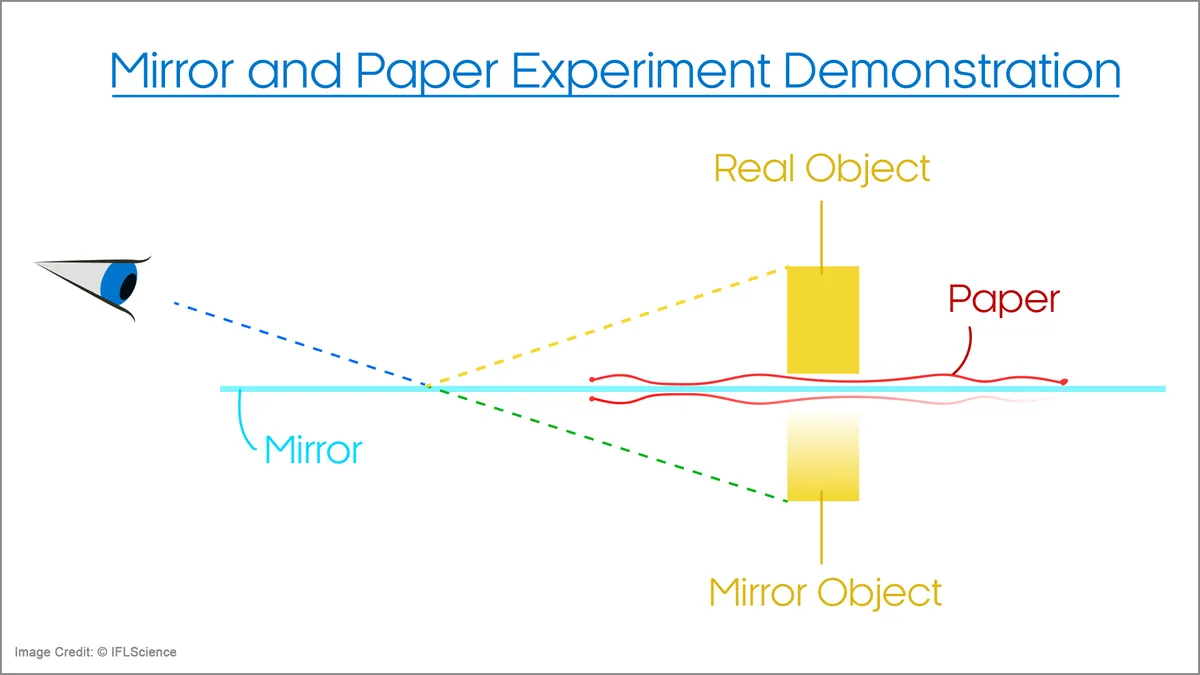Earlier this year, while scientists attempted to figure out mysteries such as the missing matter in the universe and the nature of dark matter, people on TikTok were struggling with the concept of how mirrors work.
In several videos posted to the platform, people attempted to figure out how the mirror could “see” objects placed on the mirror even when they are shielded by a piece of paper. It appears, despite our best efforts, people are still confused.
So, what’s going on? It’s actually pretty simple, even if it is apparently not instinctive. When light hits an object (say Mario of Super Mario fame) wavelengths of light are absorbed, and others are reflected back, depending on the color of the object. Mario’s hat, for example, absorbs wavelengths of light from the violet/blue end of the spectrum, and reflects the trademark red into your eyes.
To complicate this further a white piece of paper (such as that used in the video above) reflects all colors of the spectrum, making what you perceive as white. A perfect mirror – given that it would reflect back all colors on the spectrum – is also technically white, though in reality mirrors reflect green light more than other colors, making them have a slightly green tinge to them.
The reason you see reflections when you look at mirrors and don’t see reflections when you look at e.g. a white object is due to the smoothness of these objects.
When light hits a white object, the light is scattered in many, many different directions by the uneven surface (a diffuse reflection), and imperfections of texture you may not even be able to see. Mirrors, meanwhile, are smooth and reflect light at the same angle it came in at, without this scattering (or, at least, with greatly reduced scattering). The result is that if you are in a room with a mirror, an unobscured object, and a light source, you will see the object (in inverted form) reflected into your eyes.

This is how you are able to see objects placed on top of a mirror.
Image credit: © IFLScience
This explains how you can see Mario, even when placed on a piece of paper on top of a mirror. The object is obscured from the mirror directly underneath the paper (which you can’t see, because of the paper). But you are not looking at that covered portion of the mirror, unless you can somehow see through objects. You are looking at an uncovered part of the mirror, and seeing the light reflected off the object at an acute angle.
Calm down TikTok, the mirror doesn’t know anything, it just reflects.
Source Link: People Are Still Very Confused About How Mirrors Work